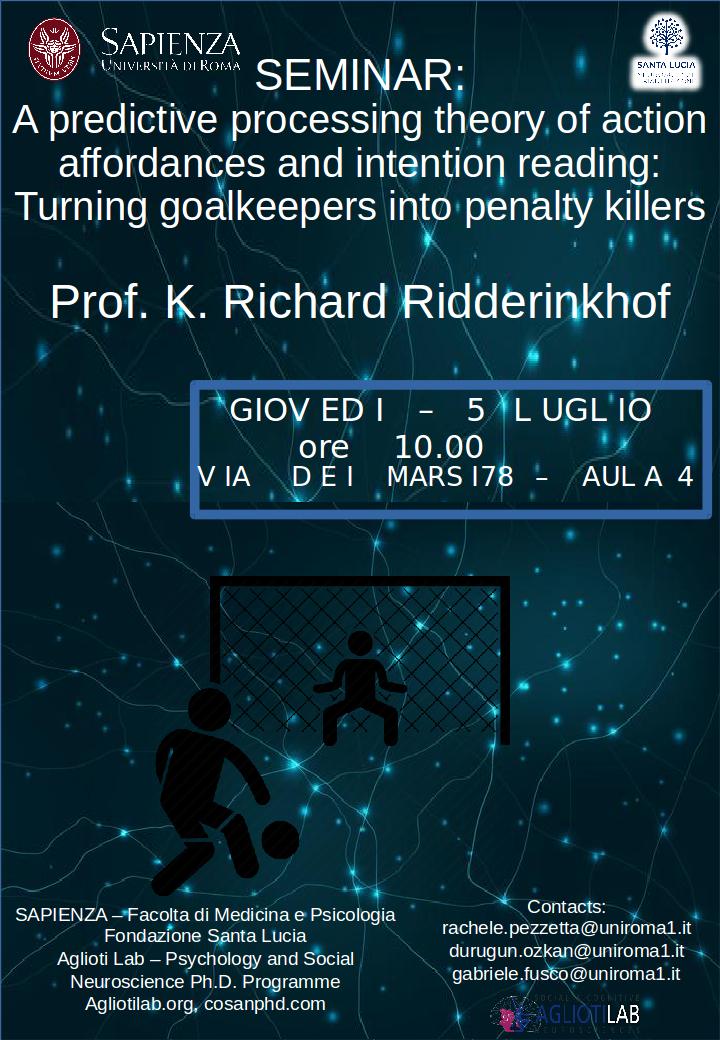
Champions League soccer matches are often decided through penalty shoot-outs. Elite goalkeepers block ~18% of all penalty's (and barely any well-kicked penalty). An improvement of just a few percent (in accuracy or response speed) may make the difference between winning and losing. Predictive processing theories assume that inferring another's action intentions requires a forward model of that agent's action, which can be obtained through learning by simulation. In an initial series of lab-based studies we have confirmed the prediction that goalkeepers benefit from acquiring a rich forward model of penalty *kicking*. Performance improved when goalkeepers trained penalty kicking and when they used first-person motor imagery to imagine what the movements observed in Champions League penalty kickers ‘feel like’. In an fMRI study, a pattern classifier was trained to distinguish motor imagery from visual attention strategies during penalty watching. Using a cross-decoding approach, the classifier was then used to determine whether observers used motor imagery or visual attention networks during an active penalty direction anticipation task that was entirely independent of the training task. Correctly anticipated (‘saved’) penalty's were classified as imagery in 2/3 of trials, suggesting engagement of the motor imagery network. Thus, goalkeepers do engage preferentially in motor imagery to infer action intentions of penalty kickers, and use the ensuing predictions to make successful saves.
5/7/2018
“A predictive processing theory of action affordances and intention reading: Turning goalkeepers into penalty
killers. Prof. Richard Ridderinkhof, Department of Psychology, Amsterdam, The Netherlands